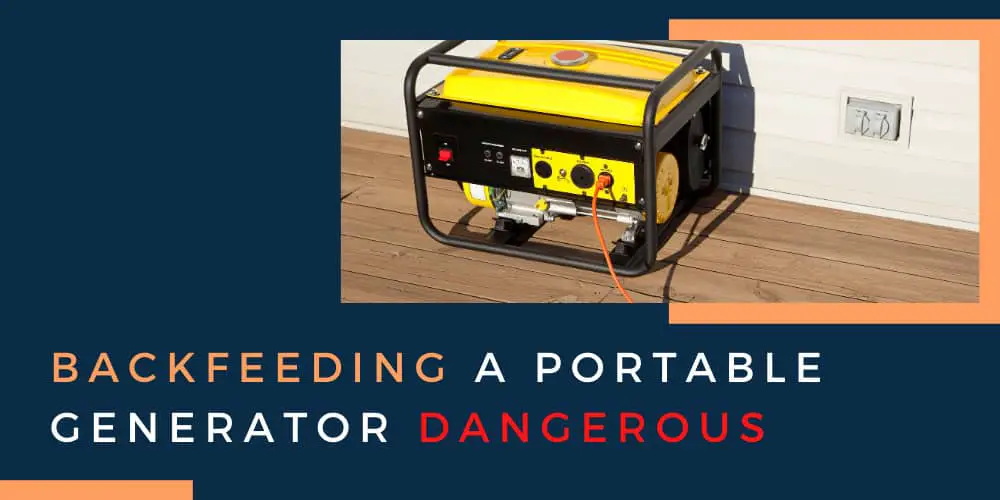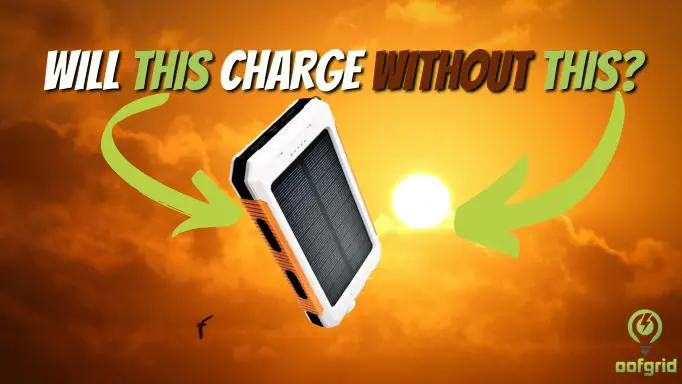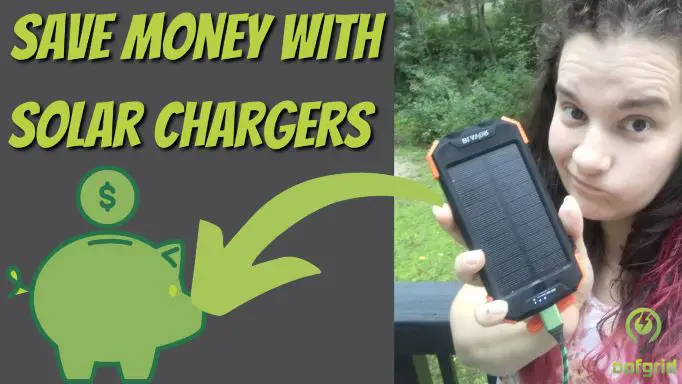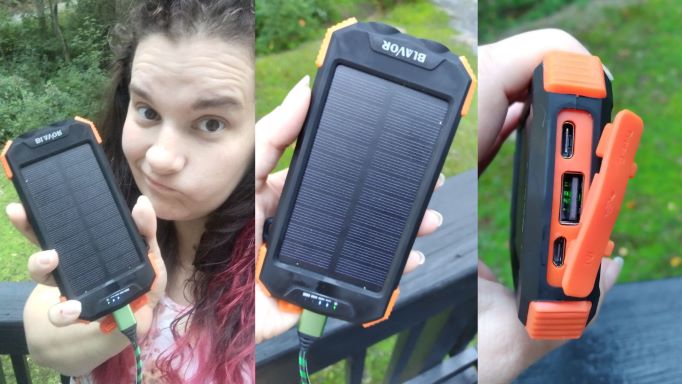Using a generator can provide significant relief if there is a power outage in your area. Many homeowners have generators available for that very purpose.
One major problem, especially with smaller, portable generators, is the potential for “backfeeding” while trying to power essential appliances in your home.
This is not only dangerous – potentially lethal – but also illegal in many jurisdictions. Despite a plethora of material on the internet about how to backfeed “safely”, you should avoid doing so.
Backfeeding arises when you directly plug in the portable generator to a wall outlet, which is connected back to your electrical panel. In this case, the power is going from the generator into your electrical system and then (potentially) out to the grid, essentially flowing backwards. This is extremely dangerous and may be illegal.
Contents
The normal flow of electricity into the home
The power grid has local transmission lines which may carry 10,000+ volts of power. This power is stepped down before being supplied into your home at 240V.
So the normal flow of current is from the external source of power (the grid), then through a main circuit breaker which is part of your electrical panel at home.
Within the electrical panel there are sub panels with circuit breakers – the main panel serves as a switchboard or “load center” for all the power that comes in before being distributed to your home appliances and fixtures.
Switching off the circuit breakers can kill all the power in your home, except for the incoming utility power.

What is Backfeeding?
During a power outage, a gas fed portable generator can be a handy tool. Large models can supply 15,000+ watts of power, but even a smaller set can generate between 3,000 to 7,000 watts – enough to keep a refrigerator, phones, computers and a few essential (small) appliances running.
You can plug into several 120-volt (or a single 240 volt) outlet(s) and be set for the duration of the power outage.
The problem of backfeeding arises when you directly plug in the portable generator to a wall outlet, which is connected back to your electrical panel.
In this case, the power is going from the generator into your electrical system and then (potentially) out to the grid, essentially flowing backwards. This is extremely dangerous and may be illegal.
INTENTIONAL VS. UNINTENTIONAL BACKFEEDING
There are certain situations where homes intentionally backfeed – for example, those with installed solar panels that contribute power back to the grid.
In these cases, however, the utility company will have ensured that the systems and circuits are properly set up, with a reverse meter to track the power being supplied back. They are responsible for the safety of the system.
Plugging a portable generator directly into a wall socket, on the other hand, is the definition of unintentional backfeeding.
In this case, you are trying to power a few essential appliances, but the result could be tragic.
Why is backfeed so Dangerous?
There are a number of safety protocols that should be followed when using a portable generator – more on that below. For now, let’s focus on the backfeeding aspect.
When you plug your generator into a wall outlet, you will typically use an aptly named “suicide cord”, which has two male ends or prongs.
You would plug one end into an outlet on the side of the “live” power generator and the other end into a dead power outlet on the wall.
This power now travels back to your electrical panel, which the outlet is connected to.
This is dangerous on several levels:
- The suicide cord is “live” – it can easily electrocute you or someone else who gets hold of a wrong end.
- The power being supplied into your house is not load balanced – it is 240 V power being supplied continuously, while various appliances run at different load levels. This kind of unbalanced load poses a fire hazard and can also damage your generator.
- Perhaps most dangerously, excess power will travel back to the outside power lines unless the main breaker has been shut off. If there is a work crew trying to repair the lines, chances are high that they can get electrocuted and suffer serious injury, even die.
You can be held liable for backfeeding ” Accidents”
In many jurisdictions, you will face stiff fines and potentially even criminal prosecution if you cause a serious accident or kill a utility serviceman. This is over and above the danger to your own person, your family and your property.
Those DIY tips on how to safely backfeed? Just forget them!

How to use a portable generator safely
There are a few essential do’s and don’ts when using a portable generator:
- The generator should not be placed inside the house – it emits dangerous fumes such as carbon monoxide – and should ideally be kept away from open doors and windows.
- When placed outside, the generator needs to be shielded from wind, rain and snow, so the ideal location may be an open shed.
- Have a stock of fuel ready for use. Store fuel cans away from heat sources, including the generator whose muffler can be red hot for a while even after you switch the machine off. It can burn through the plastic cover of a fuel can and cause an explosion.
- Plug your appliances directly into the portable generator, this avoids the backfeeding problem altogether. More on this below.
- Use of ground rods – see below.
- The main safety feature that needs to be installed if your generator stays connected to your home’s electrical system is a Mains Switch. Let’s see what it does.
How a transfer switch works
A Mains Transfer Switch can be Manual or Automatic. With the former, you will manually switch the power from the mains to a backup power source whenever you use the generator.
The problem of course is that if someone switches it back to the mains setting unwittingly (it does happen), then you are backfeeding power.
An Automatic Transfer Switch can actually detect the loss of power from the utility lines and switch you over to the backup generator.
If a transfer switch is to be installed, you must get a licensed electrician, who can follow the proper code – for example, the guidelines under National Electric Code 700.6 and 702.6 should be followed in the US.
Transfer switch rules and guidelines
A transfer switch is typically installed only for large generator systems that power floors and buildings – not for the smaller portable generators we are discussing here.
The small sets are lugged from place to place, hence the portability aspect. They should never be connected permanently to your electric circuit.
The safest way to employ a portable generator is by using appropriate load bearing extension cords to plug your essential appliances directly into the portable generator.
Make sure there are no coils, kinks, frays etc. – which could trigger a fire hazard.
When using a portable generator that is not permanently connected to your system via a transfer switch, do not use a ground rod.
Ultimately, this is the safest way to enjoy your back up power from a portable generator, while keeping in mind the safety tips previously outlined.
You will not be backfeeding, which means that you and your family members, plus any utility men working outside the home, will stay safe. In the process, you will avoid any possibility of being hit with a fine or other substantial punishment.
THE FINAL WORD
Your home is your castle, you should feel safe there. One way of ensuring that state of being is not to backfeed power from a portable generator into your electrical system.
It can pose electrocution and fire hazards, and if it gets back and reenergizes the grid, serious accidents can happen – which will become your liability in many jurisdictions.







